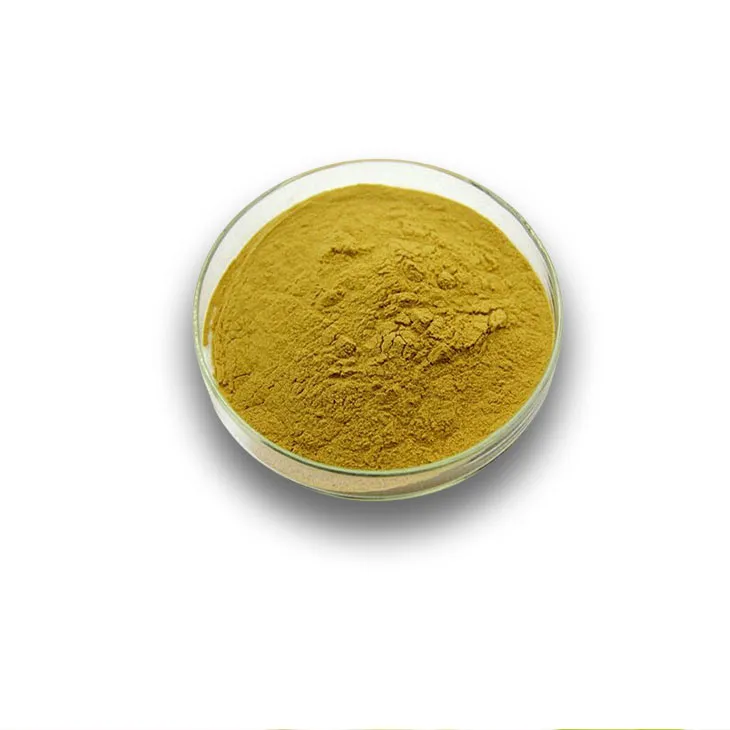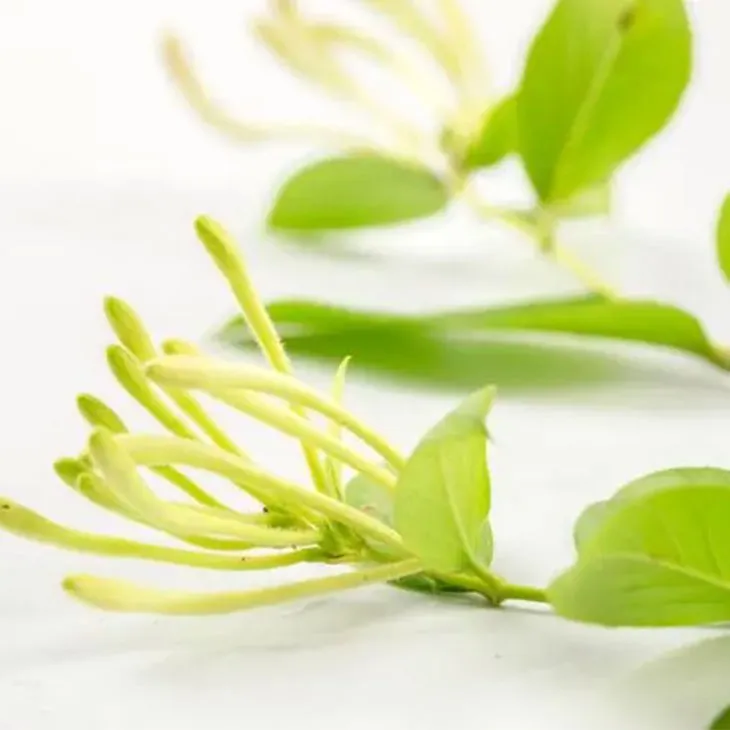- 0086-571-85302990
- sales@greenskybio.com
Honeysuckle pollen: Uses, Advantages and Manufacturing Processes
2024-11-12

1. Introduction
Honeysuckle Pollen is a natural product that has been gaining increasing attention in recent years. It is obtained from the flowers of the honeysuckle plant, which is known for its beautiful appearance and pleasant fragrance. Honeysuckle has a long history of use in various fields, and its pollen is no exception. In this article, we will explore the uses, advantages, and manufacturing processes of Honeysuckle Pollen in detail.

2. Uses of Honeysuckle Pollen
2.1. In Traditional Medicine
Honeysuckle pollen has been used in traditional medicine for centuries. One of its most notable properties is its anti - inflammatory and antibacterial capabilities. In traditional Chinese medicine, for example, honeysuckle has been used to treat various inflammatory conditions such as sore throats, fevers, and skin infections. The pollen contains bioactive compounds that can help reduce inflammation in the body. These compounds may interact with the body's immune system to suppress the excessive response that causes inflammation.
It is also believed to have antibacterial effects. The antibacterial properties of honeysuckle pollen can be useful in treating infections caused by certain bacteria. This may be due to the presence of specific chemical components in the pollen that can inhibit the growth and reproduction of bacteria. For instance, it may be effective against common bacteria that cause respiratory or gastrointestinal infections.
2.2. In the Beauty Industry
The beauty industry has also recognized the potential of honeysuckle pollen. It can be incorporated into various beauty products such as creams, lotions, and masks. Honeysuckle pollen is rich in nutrients that are beneficial for the skin. For example, it contains proteins, which can help in skin repair and regeneration. The proteins can provide the building blocks for new skin cells, making the skin look healthier and more youthful.
Vitamins present in the pollen, such as vitamin C and vitamin E, are antioxidants. Vitamin C can help brighten the skin tone and improve skin elasticity, while vitamin E can protect the skin from damage caused by free radicals. Free radicals are unstable molecules that can cause premature aging of the skin, so the antioxidant properties of honeysuckle pollen are highly valued in the beauty industry.
Minerals like zinc and selenium in the pollen also contribute to skin health. Zinc can help regulate sebum production, which is important for maintaining balanced skin. Selenium can enhance the skin's antioxidant defense system.

3. Advantages of Honeysuckle Pollen
3.1. Rich in Nutrients
As mentioned earlier, honeysuckle pollen is a nutrient - rich substance. Its protein content is significant, which is essential for various biological functions in the body. Proteins are involved in building and repairing tissues, as well as in the production of enzymes and hormones. In addition to proteins, the pollen contains a variety of vitamins. Vitamin A is important for vision and skin health, vitamin B complex plays a role in energy metabolism, and as mentioned before, vitamins C and E are powerful antioxidants.
The minerals present in honeysuckle pollen also offer numerous benefits. Calcium is crucial for bone health, iron is necessary for oxygen transport in the blood, and magnesium is involved in muscle function and nerve transmission. The combination of these nutrients makes honeysuckle pollen a valuable addition to one's diet or skincare routine.
3.2. Natural and Safe
Another advantage of honeysuckle pollen is that it is a natural product. Compared to synthetic drugs or chemicals used in medicine and beauty products, honeysuckle pollen is generally considered to be safer with fewer side effects. Since it is derived from a plant source, it is more likely to be well - tolerated by the body. However, it is still important to note that some people may be allergic to honeysuckle pollen, so proper caution should be taken when using products containing it.

4. Manufacturing Processes of Honeysuckle Pollen
4.1. Collection
The first step in the manufacturing process of honeysuckle pollen is collection. This is a crucial step as it determines the quality and purity of the final product. Honeysuckle flowers are carefully selected for pollen collection. The collection is usually done during the flowering season when the pollen is abundant. Special tools and techniques are used to ensure that only the pure pollen is collected without contamination from other parts of the flower or from external sources.
Collectors need to be trained to identify the right stage of the flower for optimal pollen collection. For example, the flowers should be fully open but not past their prime. This ensures that the pollen is at its highest quality. The collection process also needs to be carried out in a clean environment to avoid any dirt or debris getting mixed with the pollen.
4.2. Drying
After collection, the honeysuckle pollen needs to be dried. Drying is important to remove moisture from the pollen, which can prevent spoilage and the growth of mold or bacteria. There are different methods of drying, such as air - drying and using drying machines. Air - drying is a more natural method, but it may take longer. Drying machines can speed up the process but need to be carefully calibrated to ensure that the temperature and airflow are appropriate.
The drying temperature should be carefully controlled. If the temperature is too high, it may damage the bioactive compounds in the pollen. On the other hand, if the temperature is too low, the drying process may be incomplete, leaving the pollen vulnerable to spoilage. During the drying process, the pollen should be spread out evenly to ensure that all parts are dried uniformly.
4.3. Purification
Once the pollen is dried, it may need to be purified. Purification is aimed at removing any remaining impurities such as small pieces of flower debris or other foreign substances. This can be done through various techniques such as sieving or using specialized purification equipment. Sieving can separate larger impurities from the pollen based on particle size. Specialized purification equipment may use physical or chemical methods to further purify the pollen.
Quality control measures are implemented during the purification process. Samples of the purified pollen are regularly tested for purity, quality, and the presence of bioactive compounds. This ensures that the final product meets the required standards and is safe for use in medicine or beauty products.

5. Conclusion
In conclusion, honeysuckle pollen has a wide range of uses in traditional medicine and the beauty industry. Its advantages, including being rich in nutrients and being a natural and relatively safe product, make it an attractive option. The manufacturing processes of collection, drying, and purification are carefully designed to ensure the high quality and purity of the final product. However, further research is still needed to fully explore the potential of honeysuckle pollen and to develop more effective ways of using it in various applications.
FAQ:
What are the main uses of honeysuckle pollen?
Honeysuckle pollen has various uses. In traditional medicine, it is utilized for its anti - inflammatory and antibacterial properties. It also finds application in the beauty industry.
What nutrients does honeysuckle pollen contain?
Honeysuckle pollen is rich in nutrients such as proteins, vitamins, and minerals.
How is honeysuckle pollen manufactured?
The manufacturing process of honeysuckle pollen includes careful collection from the honeysuckle flowers, followed by drying and purification to ensure high quality and purity.
What are the advantages of using honeysuckle pollen in the beauty industry?
Since honeysuckle pollen is rich in nutrients like proteins, vitamins, and minerals, these can nourish the skin, help with skin repair, and potentially improve the overall appearance of the skin when used in beauty products.
Is honeysuckle pollen safe to use?
When properly processed and used as directed, honeysuckle pollen is generally considered safe. However, as with any natural product, some individuals may have allergies or sensitivities, so it's advisable to do a patch test before using it extensively.
Related literature
- The Medicinal Properties of Honeysuckle and Its Components"
- "Honeysuckle in Cosmetics: A Comprehensive Review"
- "Nutritional Analysis of Honeysuckle Pollen"
- ▶ Hesperidin
- ▶ Citrus Bioflavonoids
- ▶ Plant Extract
- ▶ lycopene
- ▶ Diosmin
- ▶ Grape seed extract
- ▶ Sea buckthorn Juice Powder
- ▶ Fruit Juice Powder
- ▶ Hops Extract
- ▶ Artichoke Extract
- ▶ Mushroom extract
- ▶ Astaxanthin
- ▶ Green Tea Extract
- ▶ Curcumin
- ▶ Horse Chestnut Extract
- ▶ Other Product
- ▶ Boswellia Serrata Extract
- ▶ Resveratrol
- ▶ Marigold Extract
- ▶ Grape Leaf Extract
- ▶ New Product
- ▶ Aminolevulinic acid
- ▶ Cranberry Extract
- ▶ Red Yeast Rice
- ▶ Red Wine Extract
-
Curcuma Longa Extract
2024-11-12
-
Baicalin
2024-11-12
-
White Peony Extract
2024-11-12
-
Phellodendron Extract
2024-11-12
-
Black Garlic Extract
2024-11-12
-
Hericium erinaceus extract powder
2024-11-12
-
Golden Seal Extract
2024-11-12
-
Aminolevulinic acid
2024-11-12
-
Soy Extract
2024-11-12
-
Hawthorn Extract
2024-11-12





















